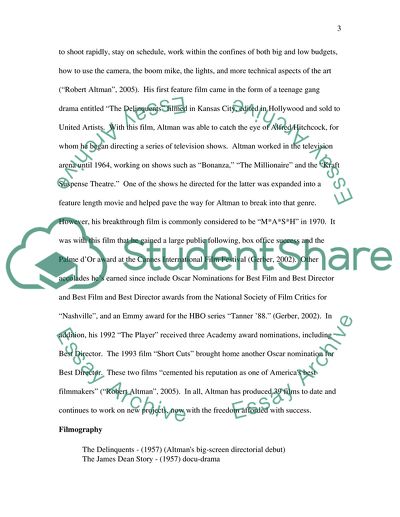Cite this document
(“Robert Altman ; The Director, and a close analysis of The GingerBread Essay”, n.d.)
Robert Altman ; The Director, and a close analysis of The GingerBread Essay. Retrieved from https://studentshare.org/miscellaneous/1535656-robert-altman-the-director-and-a-close-analysis-of-the-gingerbread-man
Robert Altman ; The Director, and a close analysis of The GingerBread Essay. Retrieved from https://studentshare.org/miscellaneous/1535656-robert-altman-the-director-and-a-close-analysis-of-the-gingerbread-man
(Robert Altman ; The Director, and a Close Analysis of The GingerBread Essay)
Robert Altman ; The Director, and a Close Analysis of The GingerBread Essay. https://studentshare.org/miscellaneous/1535656-robert-altman-the-director-and-a-close-analysis-of-the-gingerbread-man.
Robert Altman ; The Director, and a Close Analysis of The GingerBread Essay. https://studentshare.org/miscellaneous/1535656-robert-altman-the-director-and-a-close-analysis-of-the-gingerbread-man.
“Robert Altman ; The Director, and a Close Analysis of The GingerBread Essay”, n.d. https://studentshare.org/miscellaneous/1535656-robert-altman-the-director-and-a-close-analysis-of-the-gingerbread-man.


